Microstructure and Properties of Cladding Layers Prepared by Argon-Shielded Arc Cladding of CuZn40-WC Powders on Pure Aluminum Substrate
Abstract
:1. Introduction
2. Materials and Methods
3. Results and Discussion
3.1. Morphology of Cladding Layer
3.2. Microstructure of Cladding Layer
3.3. Microhardness
3.4. Wear Resistance
4. Conclusions
Author Contributions
Funding
Acknowledgments
Conflicts of Interest
References
- Miller, W.S.; Zhuang, L.; Bottema, J.; Wittebrood, A.; De Smet, P.; Haszler, A.; Vieregge, A. Recent development in aluminium alloys for the automotive industry. Mater. Sci. Eng. A 2000, 280, 37–49. [Google Scholar] [CrossRef] [Green Version]
- Zhang, X.; Li, L.; Chen, Y.; Yang, Z.; Chen, Y.; Guo, X. Effects of pulse parameters on weld microstructure and mechanical properties of extra pulse current aided laser welded 2219 aluminum alloy joints. Materials 2017, 10, 1091. [Google Scholar] [CrossRef] [PubMed]
- Heinz, A.; Haszler, A.; Keidel, C.; Moldenhauer, S.; Benedictus, R.; Miller, W.S. Recent development in aluminium alloys for aerospace applications. Mater. Sci. Eng. A 2000, 280, 102–107. [Google Scholar] [CrossRef]
- Xu, J.; Liu, W.; Kan, Y.; Zhong, M. Microstructure and wear properties of laser cladding Ti–Al–Fe–B coatings on AA2024 aluminum alloy. Mater. Des. 2006, 27, 405–410. [Google Scholar] [CrossRef]
- He, H.; Guo, W.H.; Xiao, M.; Pang, X.Z.; Shen, X.M.; Fu, Y.C.; Zeng, J.M. Effect of laser cladding Al3Ti-based coatings on the wear and corrosion resistances of AA6063 aluminum alloy. Adv. Mater. Res. 2013, 652–654, 1897–1903. [Google Scholar] [CrossRef]
- Liu, C.L.; Lv, Y.H.; Xiang, Y.H.; Xia, D.; Xu, B.S. Microstructures and properties of aluminum alloy cladding deposited by variable polarity plasma arc overlaying. China Surf. Eng. 2009, 22, 37–40. [Google Scholar]
- Ravi, N.; Sastikumar, D.; Subramanian, N.; Nath, A.K.; Masilamani, V. Microhardness and microstructure studies on laser surface alloyed aluminum alloy with Ni-Cr. Adv. Manuf. Process. 2000, 15, 395–404. [Google Scholar] [CrossRef]
- Ye, H.; Peng, S.X.; Yan, Z.L.; Zhang, X.B. Microstructure and properties of laser cladding Fe-Al intermetallics. Adv. Mater. Res. 2013, 659, 39–42. [Google Scholar] [CrossRef]
- Jendrzejewski, R.; Van Acker, K.; Vanhoyweghen, D.; Śliwiński, G. Metal matrix composite production by means of laser dispersing of SiC and WC powder in Al alloy. Appl. Surf. Sci. 2009, 255, 5584–5587. [Google Scholar] [CrossRef]
- Ouyang, J.H.; Nowotny, S.; Richter, A.; Beyer, E. Laser cladding of yttria partially stabilized ZrO2 (YPSZ) ceramic coatings on aluminum alloys. Ceram. Int. 2001, 27, 15–24. [Google Scholar] [CrossRef]
- Man, H.C.; Yang, Y.Q.; Lee, W.B. Laser induced reaction synthesis of TiC+WC reinforced metal matrix composites coatings on AA 6061. Surf. Coat. Techol. 2004, 185, 74–80. [Google Scholar] [CrossRef]
- Nath, S.; Pityana, S.; Majumdar, J.D. Laser surface alloying of aluminium with WC + Co + NiCr for improved wear resistance. Surf. Coat. Technol. 2012, 206, 3333–3341. [Google Scholar] [CrossRef]
- Ureña, A.; Escalera, M.D.; Gil, L. Influence of interface reactions on fracture mechanisms in TIG arc-welded aluminium matrix composites. Compos. Sci. Technol. 2000, 60, 613–622. [Google Scholar] [CrossRef]
- Wang, X.H.; Niu, J.T.; Guan, S.K.; Wang, L.J.; Cheng, D.F. Investigation on TIG welding of SiCp-reinforced aluminum–matrix composite using mixed shielding gas and Al–Si filler. Mater. Sci. Eng. A 2009, 499, 106–110. [Google Scholar]
- Wu, J.; Chen, S.M.; Sun, Z.F.; Ding, Z.B.; Sun, S.L. Research on technologies for surface deposited metal powders aluminum alloy with TIG. J. Wuhan Automot. Polytech. Univ. 1998, 20, 16–18. [Google Scholar]
- Lotfi, B.; Rostami, M.; Sadeghian, Z. Effect of silicon content on microstructure of Al-Si/SiCp composite layer cladded on A380 Al alloy by TIG welding process. Trans. Nonferrous Met. Soc. China 2014, 24, 2824–2830. [Google Scholar] [CrossRef]
- Tang, W.B.; Lu, C.H.; Li, Y.P. Investigation on TiCp/Al composite coating by TIG cladding. Appl. Mech. Mater. 2014, 490–491, 29–33. [Google Scholar] [CrossRef]
- He, L.; Tan, Y.F.; Wang, X.L.; Jing, Q.F.; Hong, X. Tribological properties of laser cladding TiB2 particles reinforced Ni-base alloy composite coatings on aluminum alloy. Rare Met. 2015, 34, 789–796. [Google Scholar] [CrossRef]
- Dubourg, L.; Pelletier, H.; Vaissiere, D.; Hlawka, F.; Cornet, A. Mechanical characterization of laser surface alloyed aluminium–copper systems. Wear 2002, 253, 1077–1085. [Google Scholar] [CrossRef]
- Tomida, S.; Nakata, K. Fe–Al composite layers on aluminum alloy formed by laser surface alloying with iron powder. Surf. Coat. Technol. 2003, 174, 559–563. [Google Scholar] [CrossRef]
- Mabhali, L.A.; Sacks, N.; Pityana, S. Three body abrasion of laser surface alloyed aluminum AA1200. Wear 2012, 290–291, 1–9. [Google Scholar] [CrossRef]
- Chong, P.H.; Man, H.C.; Yue, T.M. Microstructure and wear properties of laser surface-cladded Mo–WC MMC on AA6061 aluminum alloy. Surf. Coat. Technol. 2001, 145, 51–59. [Google Scholar] [CrossRef]
- Rajamure, R.S.; Vora, H.D.; Srinivasan, S.G.; Dahotre, N.B. Laser alloyed Al-W coatings on aluminum for enhanced corrosion resistance. Appl. Surf. Sci. 2015, 328, 205–214. [Google Scholar] [CrossRef]
- Liang, G.Y.; Su, J.Y. The microstructure and tribological characteristics of laser-clad Ni–Cr–Al coatings on aluminium alloy. Mater. Sci. Eng. A 2000, 290, 207–212. [Google Scholar] [CrossRef]
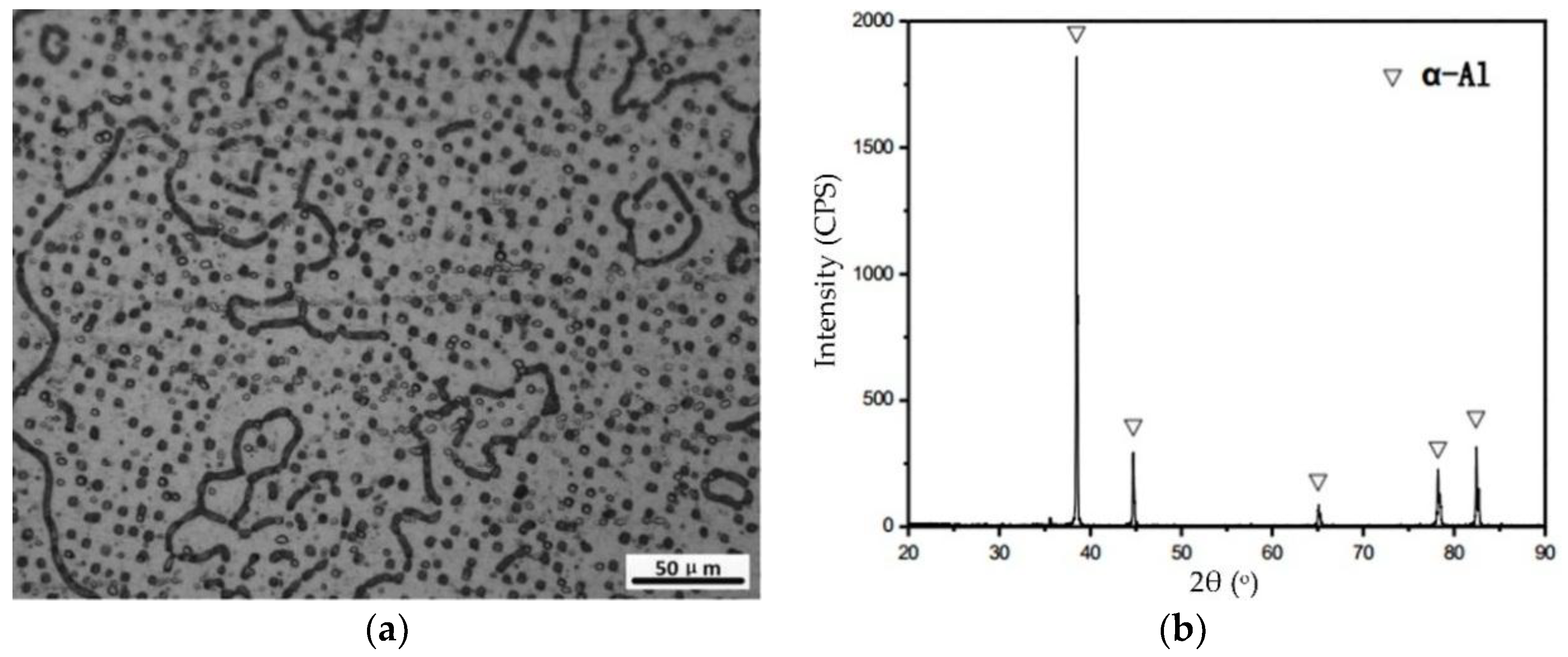


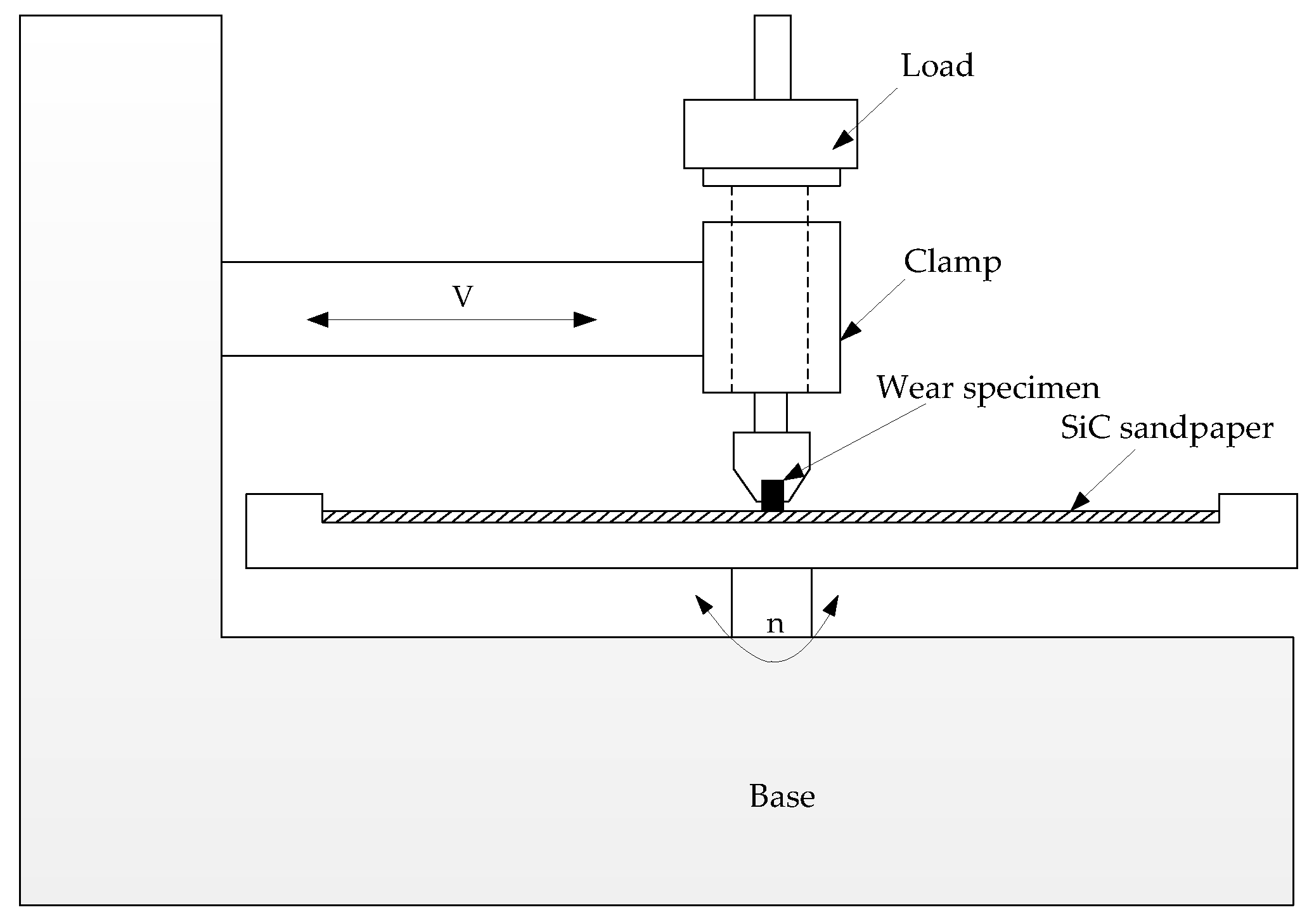

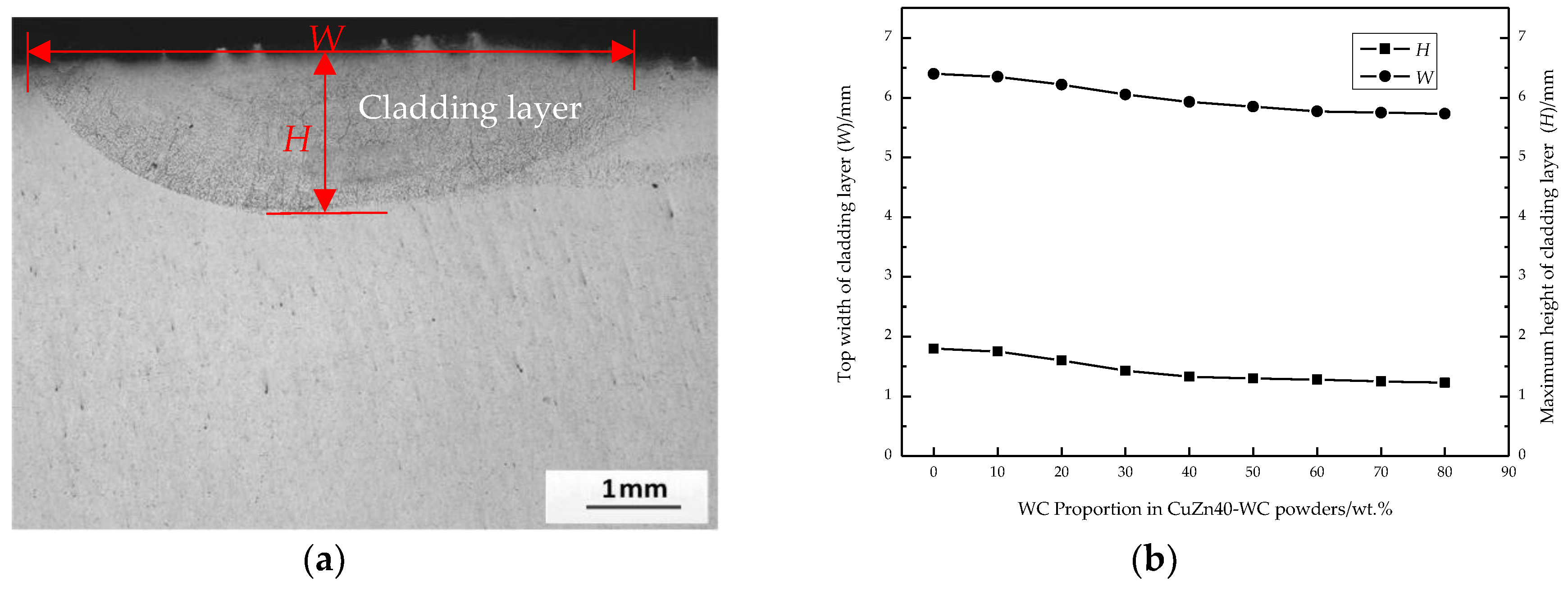

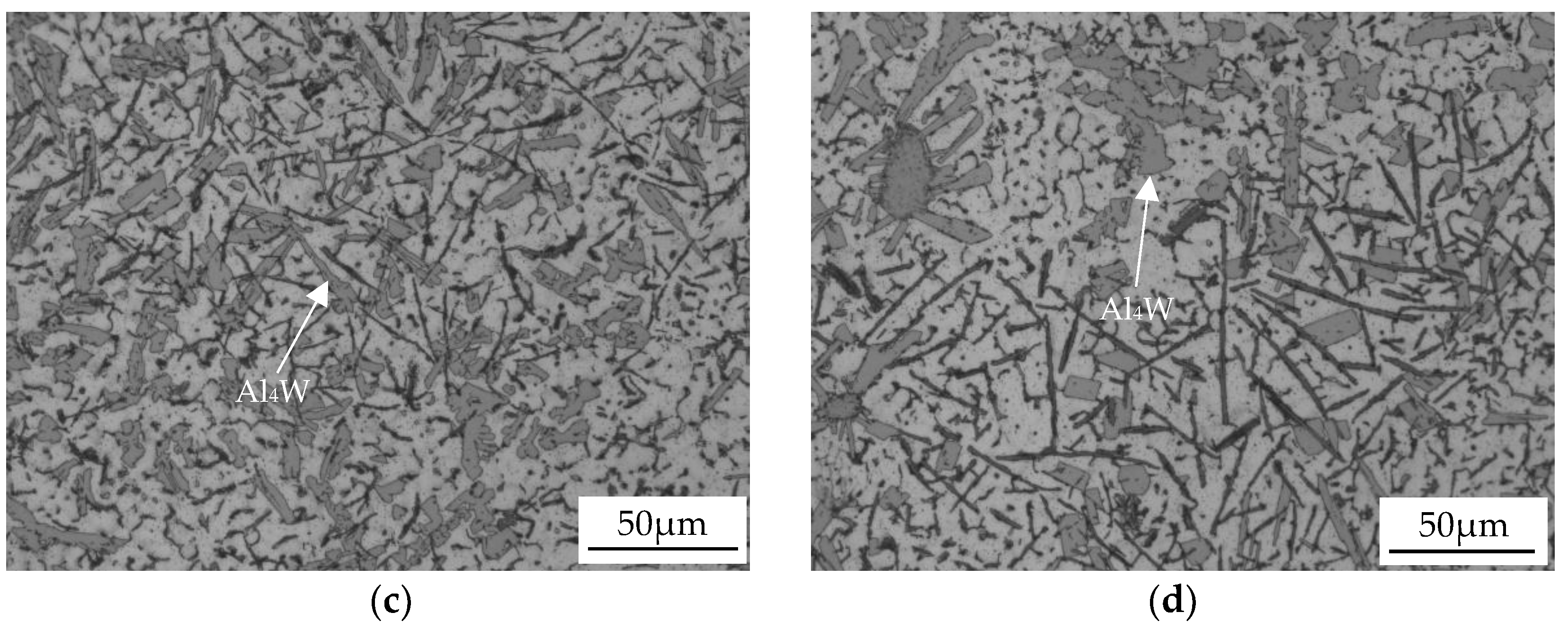
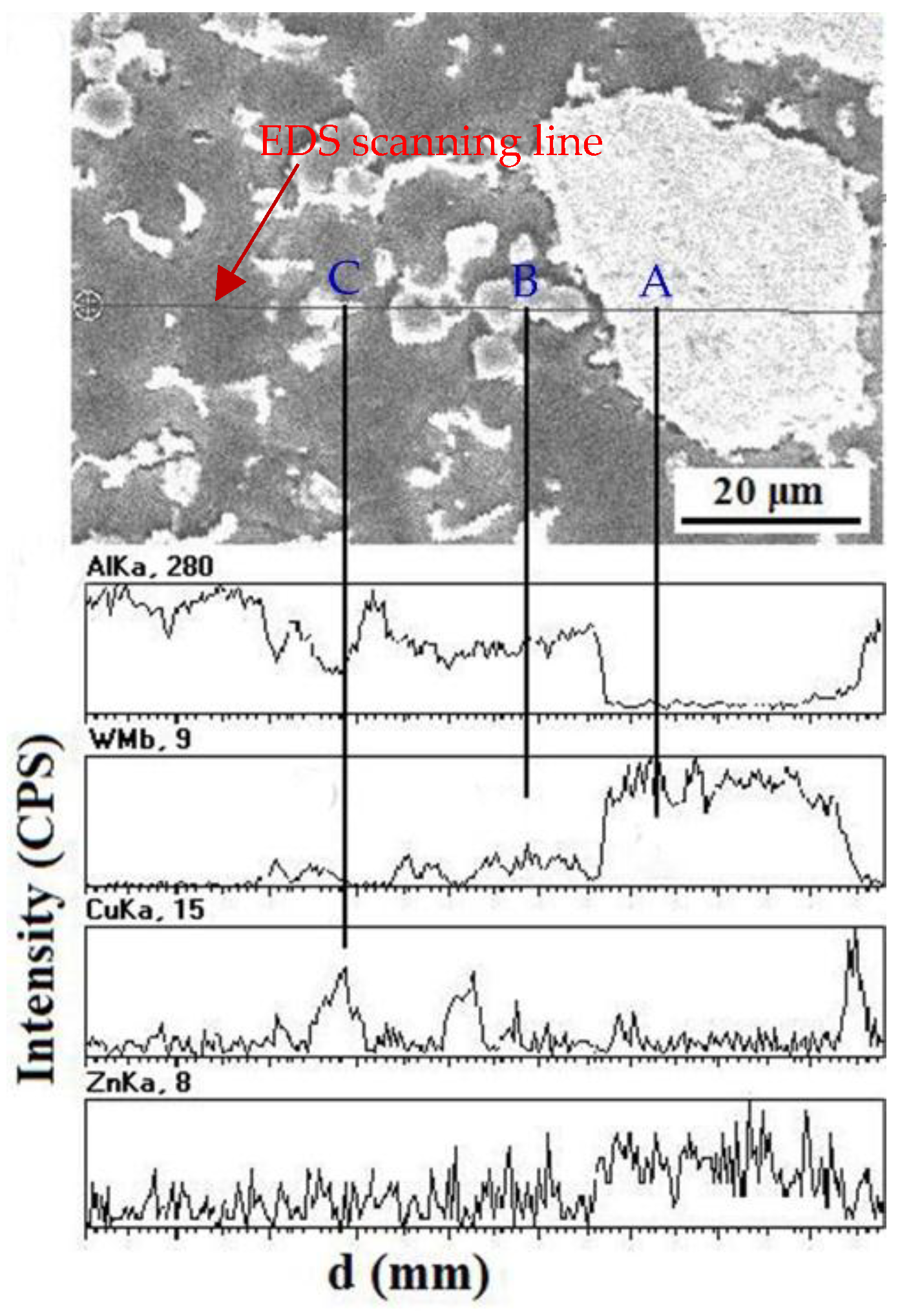
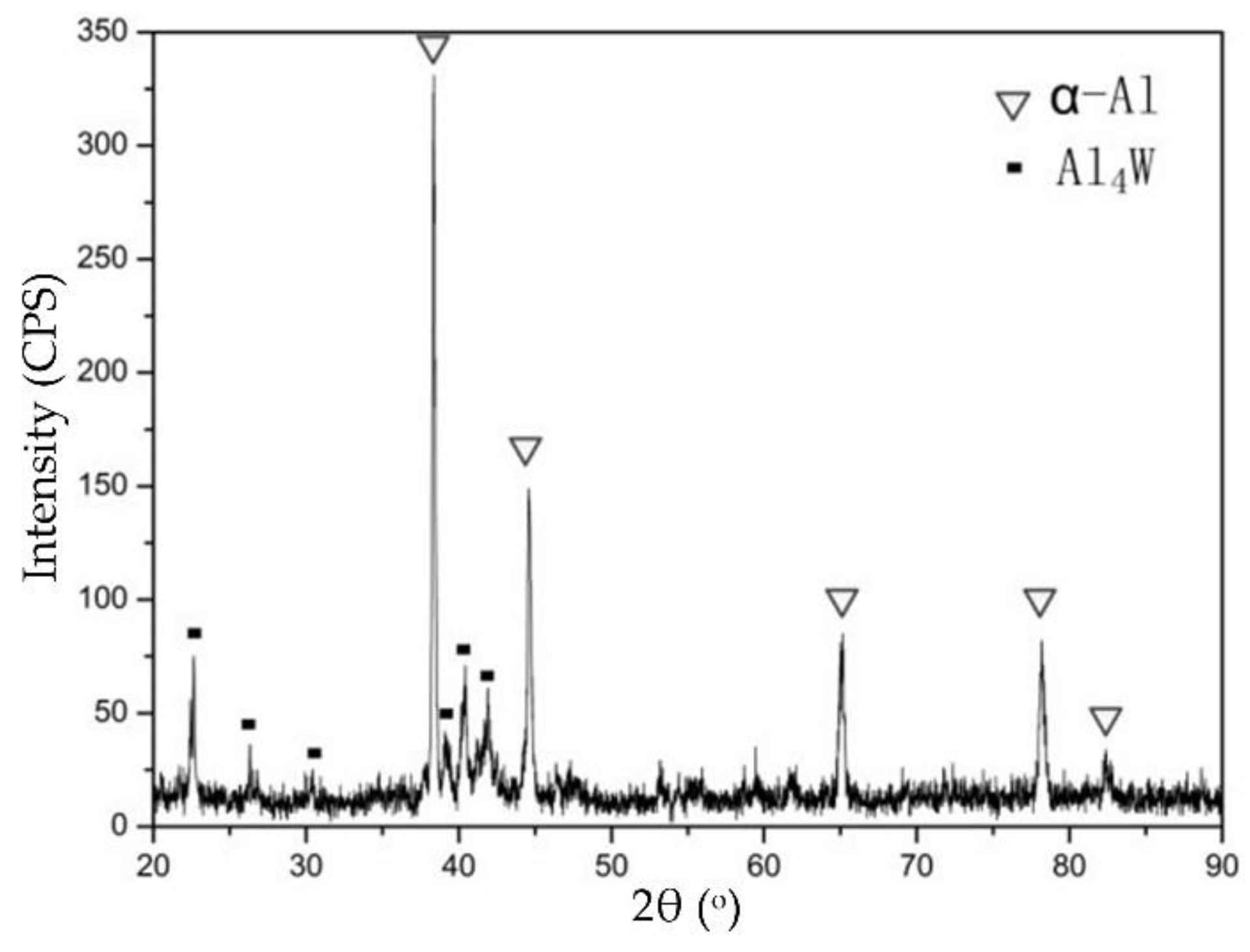



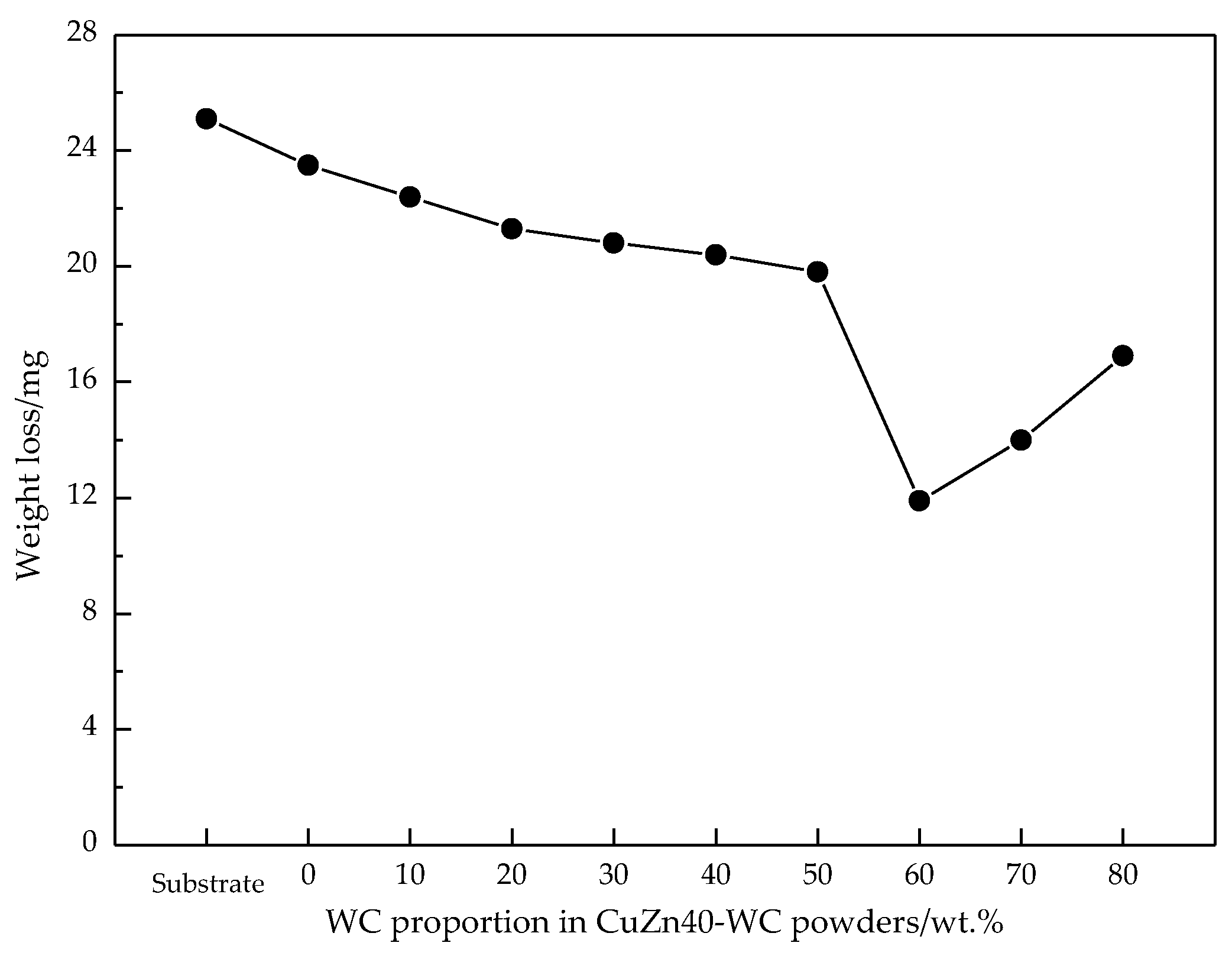

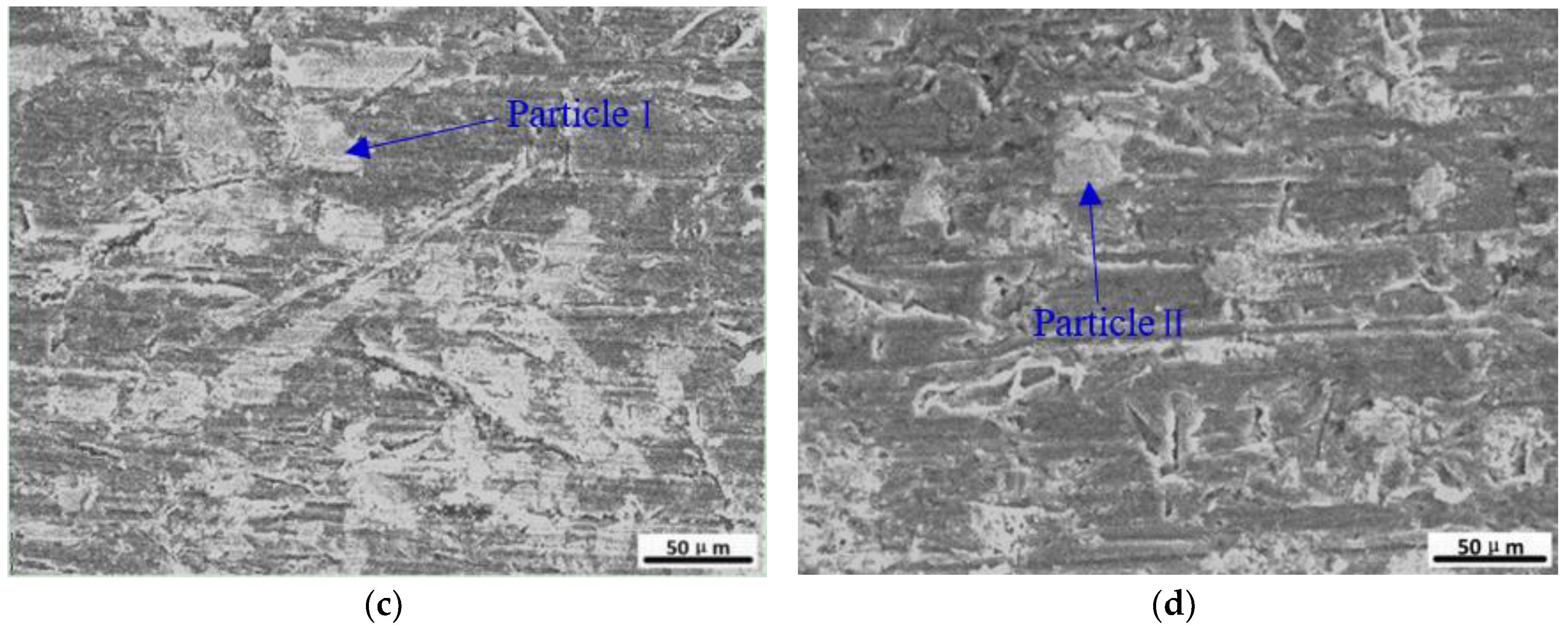
| Electrode Diameter (mm) | Cladding Current (A) | Cladding Velocity (mm/s) | Flowing Velocity of Argon (L/min) |
|---|---|---|---|
| 2.4 | 160 | 2.8 | 10 |
| Element (at.%) | Particle I | Particle II |
|---|---|---|
| Al | 76.43 | 78.59 |
| W | 21.62 | 20.35 |
| Cu | 0.83 | 0.26 |
| Zn | 1.12 | 0. 77 |
© 2018 by the authors. Licensee MDPI, Basel, Switzerland. This article is an open access article distributed under the terms and conditions of the Creative Commons Attribution (CC BY) license (http://creativecommons.org/licenses/by/4.0/).
Share and Cite
Zhang, X.; Sang, Q.; Ren, Z.; Li, G. Microstructure and Properties of Cladding Layers Prepared by Argon-Shielded Arc Cladding of CuZn40-WC Powders on Pure Aluminum Substrate. Coatings 2018, 8, 382. https://doi.org/10.3390/coatings8110382
Zhang X, Sang Q, Ren Z, Li G. Microstructure and Properties of Cladding Layers Prepared by Argon-Shielded Arc Cladding of CuZn40-WC Powders on Pure Aluminum Substrate. Coatings. 2018; 8(11):382. https://doi.org/10.3390/coatings8110382
Chicago/Turabian StyleZhang, Xinge, Qing Sang, Zhenan Ren, and Guofa Li. 2018. "Microstructure and Properties of Cladding Layers Prepared by Argon-Shielded Arc Cladding of CuZn40-WC Powders on Pure Aluminum Substrate" Coatings 8, no. 11: 382. https://doi.org/10.3390/coatings8110382




